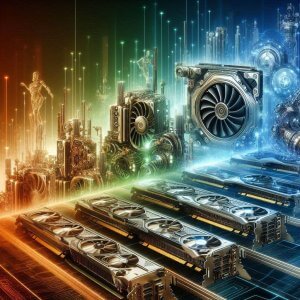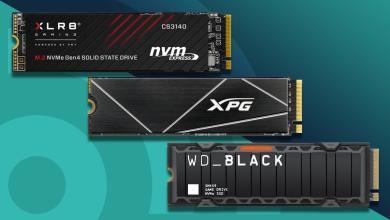
From its modest origins as clean display controllers to the powerful GPUs (Graphics Processing Units) of in recent times, the pics card technology has advanced appreciably. Present-day picture playing playing playing cards have come to be a crucial element of computer structures, whether or not for gaming, video enhancing, synthetic intelligence processing, or clinical simulations. We can also moreover take a look at the improvements within the GPU technology, the manner it influences various corporations, and what the future holds for picture processing in this weblog.
The Early Days of Graphics Cards
Picture cards were the primary devices used inside the Nineteen Eighties and early Nineties to show text and take quick pictures. Introduced thru IBM in 1987, the VGA (Video Graphics Array) became a step forward that enabled colour suggests with 640×480 pixel resolutions. However, the majority of graphical sports activities have been treated with the aid of using using the pc’s CPU due to the fact those early photo playing gambling cards lacked devoted processing energy.
Three-D picture accelerators, which incorporates the 3dfx Voodoo and NVIDIA RIVA TNT, have been brought in the 1990s and substantially advanced multimedia and gaming overall performance. These playing gambling playing cards served due to the fact the version for current-day GPUs as that that they’d specialized technology for texture mapping, shading, and polygon rendering.
The Rise of the GPU
With businesses like NVIDIA and AMD vying to create robust GPUs, the 2000s noticed the actual development in picture production. The introduction of DirectX and OpenGL APIs helped standardize recreation improvement, on the identical time as the improvement of programmable shaders enabled developers to supply greater logical photos.

With every subsequent generation, AMD’s Radeon series and NVIDIA’s GeForce have emerged as effective forces inside the enterprise enterprise, pushing the limits of normal overall performance. From being easy rendering equipment to pretty contemporary processors able to parallel computing, images cards have revolutionized sectors past gaming.
Graphics Cards in AI and Scientific Computing
GPUs aren’t simplest for gaming anymore. They are high-quality for deep mastering, scientific simulations, and synthetic intelligence (AI) due to their capability to cope with big volumes of data simultaneously. While researchers depend upon GPUs for genetic assessment, molecular modeling, and weather prediction, agencies together with Google and Tesla employ them to train AI fashions.
GPUs also are vital for mining cryptocurrencies. Due to the intense parallelizability of the cryptographic computations wished for mining Bitcoin and extraordinary cryptocurrencies, GPUs are far extra environmentally exceptional than normal CPUs for such duties. But this boom in name for has led to transport delays and rising fees for gaming GPUs.
Ray Tracing: The Future of Realistic Graphics
Ray tracing, a rendering method that mimics how moderate interacts with gadgets in a scene, is one of the maximum huge upgrades in modern-day photograph playing cards. Ray tracing, which changed into first brought with NVIDIA’s RTX series, lets in very practical reflections, shadows, and lights outcomes in video video games. Additionally, AMD has protected ray tracing onto its recently launched Radeon GPUs, permitting real-time applications to apply breathtakingly lovable images.
The Future of Graphics Cards
We may additionally assume more and more green GPUs with progressed power overall performance and modern day overall performance because of the reality the age continues to adapt. The evolution of cloud-primarily based completely gaming, AI-pushed rendering, and quantum computing may additionally absolutely exchange the way that pictures and playing cards function.

Technologies like AMD’s FSR (FidelityFX Super Resolution) and NVIDIA’s DLSS (Deep Learning Super Sampling) are already revolutionizing online game optimization via manner of offering pretty excessive photos without sacrificing trendy pace.




